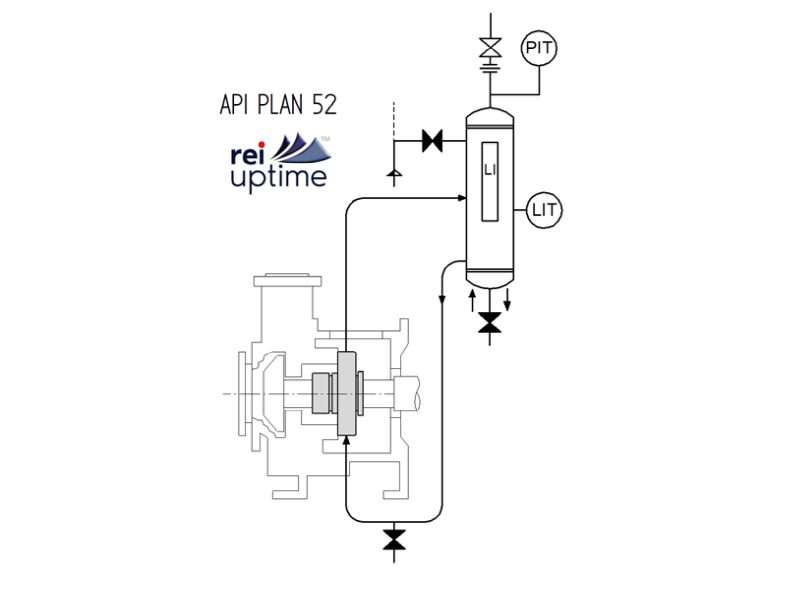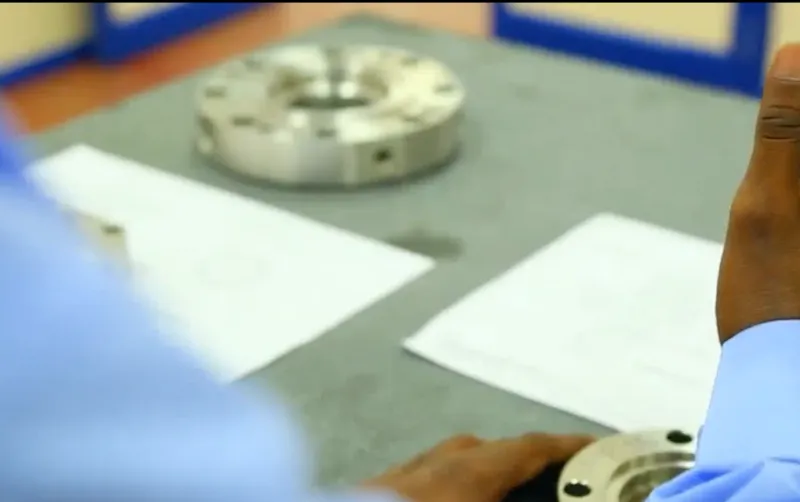

25 يونيو 2025
أفضل الممارسات لتركيب الأختام الميكانيكية
Mechanical seals are precision components, and even the most durable seal can fail prematurely if it’s installed incorrectly. Whether the seal is used in chemical pumps, food-grade mixers or rotating equipment in refineries, small installation errors often lead to rapid degradation, leaks, and unplanned downtime.
Reliability Engineering Industries has worked with hundreds of industrial clients to troubleshoot and resolve seal failures caused not by material defects but by poor installation methods. Understanding these mistakes is the first step toward improving reliability.
Frequent issues include:
- Contamination during installation, introducing particles that wear the seal faces
- Improper alignment between shaft and seal, leading to uneven wear or contact
- Over-tightening of gland bolts, which distorts the seal assembly
- Using damaged or worn tools, increasing the risk of scratches or inaccurate torque
- Skipping pre-installation inspection, resulting in the use of compromised or misfit parts
Each of these issues can reduce the operational life of a seal, regardless of material quality or application design.
How Improper Installation Shortens Seal Life
When a seal is not installed precisely, several types of damage may occur:
- Face misalignment, causing uneven loading and accelerated surface wear
- Elastomer damage, from cuts, swelling or pinching during assembly
- Heat generation, from friction due to poor face contact
- Vibration, when the shaft is not centred or balanced properly
- Loss of seal integrity, due to leakage past improperly seated components
Reliability Engineering Industries regularly inspects failed seals returned from the field, and in many cases, premature breakdowns trace back to these preventable errors.
Best Practices for Seal Installation
To ensure optimal seal performance, technicians and maintenance engineers should follow a consistent, documented installation procedure. Reliability Engineering Industries recommends the following best practices:
- Cleanliness is critical: All parts, tools and the surrounding work area must be spotless. Even microscopic contaminants can compromise seal faces.
- Inspect before use: Always examine seal faces, springs, gaskets and o-rings for damage, deformation or contamination. Replace anything questionable.
- Use manufacturer-provided tools: Specialised jigs and gauges ensure correct positioning and prevent over-tightening.
- Lubricate appropriately: Use recommended lubricants on o-rings or elastomers to aid in installation, but avoid overuse that could contaminate seal faces.
- Check shaft condition: Shaft surfaces should be smooth, within concentricity tolerances, and free of burrs or scoring.
- Follow a torque pattern: Tighten bolts in a criss-cross sequence and to specified torque levels to avoid distorting the seal.
- Don’t rush alignment: Use dial indicators to confirm shaft-to-seal face alignment is within tolerance before startup.
- Allow settling time: After installation, allow a few hours of ambient stabilisation before beginning operation under full load or temperature.
Reliability Engineering Industries provides client-specific installation guides based on seal type, material and application to ensure consistent outcomes.
Special Tools and Techniques for Precision Installation
Modern seal designs often require equally modern installation approaches. Using the right tools can improve consistency and help prevent damage.
Recommended tools include:
- Torque wrenches, to avoid over- or under-tightening of bolts
- Dial indicators, for accurate shaft alignment
- Clean benches, to maintain contamination-free environments
- O-ring sizing cones, to prevent elastomer stretching
- Seal face protectors, which guard against scratches or chips during handling
- Portable microscopes, for inspecting sealing surfaces in the field
Reliability Engineering Industries trains client maintenance teams on how to properly use these tools during seal installation, improving both efficiency and repeatability.
Post-Installation Checks That Shouldn’t Be Skipped
Installing the seal is just one part of the equation. Verifying its performance before full operation can catch minor oversights before they escalate.
Key post-installation checks include:
- Leak testing using air or fluid at low pressure
- Dry rotation to verify smooth shaft movement
- System flush to remove any remaining debris from the process line
- Temperature monitoring during initial operation
- Visual inspections for early signs of fluid loss or misalignment
Reliability Engineering Industries supports these procedures with startup protocols designed to help customers verify that seal performance meets specifications before continuous use begins.
Supporting Long-Term Reliability Through Proper Installation
Proper installation not only maximises seal lifespan but also contributes to system efficiency and process safety. A properly installed seal:
- Reduces energy consumption by minimising drag
- Helps meet regulatory compliance by preventing emissions and leaks
- Lowers maintenance costs through fewer shutdowns
- Increases operator confidence and equipment uptime
Reliability Engineering Industries designs its mechanical seals for maximum resilience, but to fully realise their performance, correct installation is essential. That’s why the company offers on-site support, detailed installation documentation, and seal training services for client teams.
Precision begins at installation. Avoid seal failure and protect your equipment investment with expert support. Contact the team at Reliability Engineering Industries to schedule installation assistance, access technical documentation, or speak with a seal specialist about your application.
الوظائف المقترحة
لم يتم العثور على أي عناصر.




